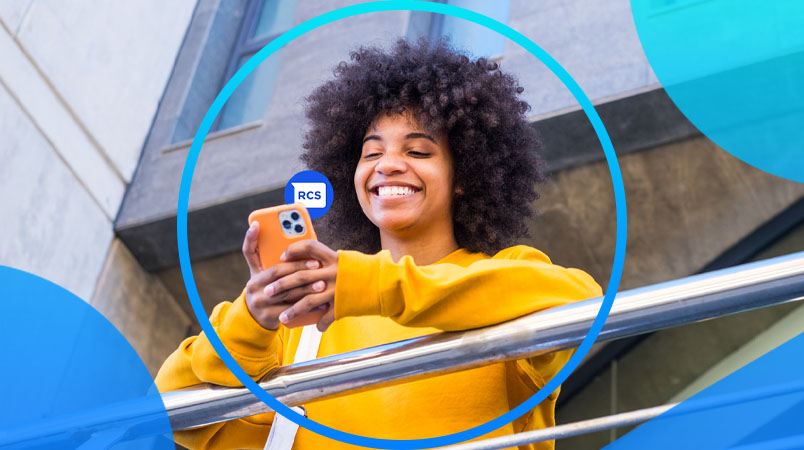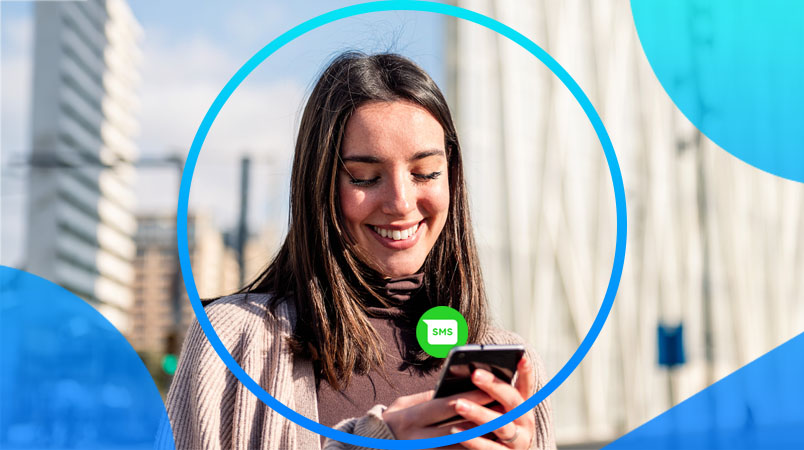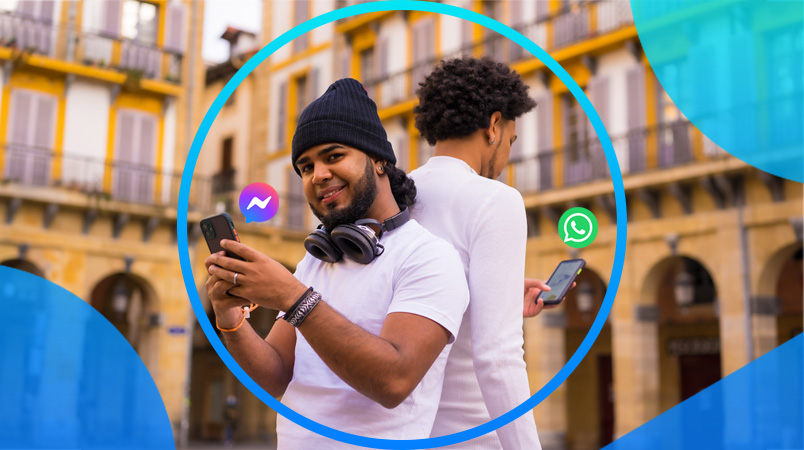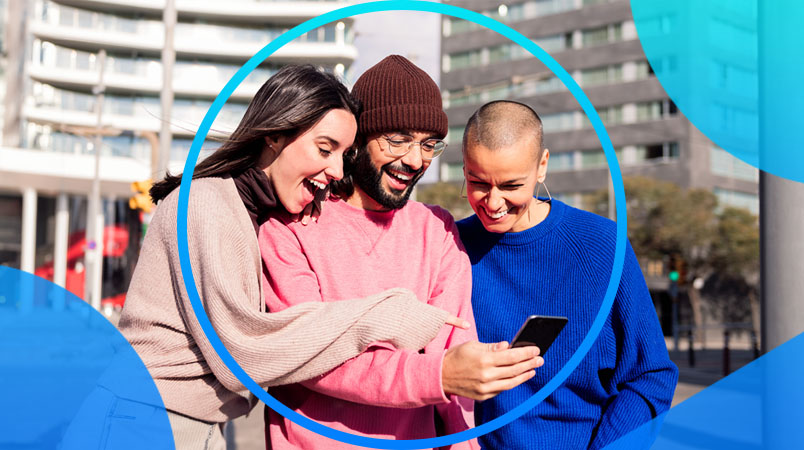Why? Because omnichannel communication is the future of business. Let us take you through an omnichannel inbox and how to create a productive user experience.
What is omnichannel communication?
In the last decade, the way customers engage with brands has changed. Once in-person was the only option, but this evolved to telephone and eventually email communication. The advent of social media has blown open communication channels, and businesses are taking advantage of this to benefit both parties.
As a result of omnichannel communication, you can engage your customers through their preferred messaging channels, from WhatsApp to Apple Messages, Facebook Messenger to Google Business Messages, Telegram to Twitter - all with a single omnichannel inbox for all of your communications.
Multichannel vs omnichannel
Multichannel is more than one channel to market and communicate information related to your brand. These are separate channels, however, with no integration. The omnichannel approach streamlines all conversations across all platforms, such as the website, social media, email, and phone, and assists in gaining a better knowledge of consumer behaviour by mapping their journey to provide a seamless customer experience.
Why do we need omnichannel UX?
Consumers aren’t interacting with brands as they once did. They’re using a variety of communication channels depending on where they are and what they’re doing.
An omnichannel user experience ensures the customer is at the centre of the communication channels and is efficiently guided where they need to be to secure the product or service. In terms of customer relationship management omnichannel UX is a leading contender.
Go all-in on customer support, exceed expectations, and turn one-time shoppers into lifelong customers with Mobile Service Cloud
How to create an omnichannel experience?
While omnichannel UX is vital for securing customers, instilling loyalty and securing repeat business, this can only be achieved if you design a really effective omnichannel experience. Here’s a look at how.
1. Know your audience
The omnichannel experience places your customer at the very centre of everything you do. You need to deliver what your customer wants when they want it along their preferred communication channel. This requires you to do some customer research to understand the customer demographic. As an example, the baby boomers and Gen X consumers still prefer the physical store and website option. However, Gen Z and millennials – while not averse to these channels – tend to veer towards the social media communication channels.
2. Map the customer journey
Once you’ve got a clearer idea of your customer base, then you need to work out how to reach them through the various communication channels by managing the customer preferences. This requires you to actually map out the customer journey and identify any areas of weakness that need to be addressed. If you’re finding many customers are abandoning their shopping carts, then you might, for example, require a chatbot to engage with them and discover what information is needed to finalise the purchase.
3. Ensure there’s consistency
Across your omnichannel UX, you need to ensure there is consistency in design and functionality so that your customers feel comfortable moving between them. This requires you to consider consistency in terms of familiar screens, similar tone of voice, buttons in the same area and similar functionality throughout. You want to create a reassuring user experience that doesn’t require new learning on every platform.
4. Sufficient choice
Customers have their own preferences when it comes to communication channels, and they’re much more likely to engage with your brand if you’re offering them a channel with which they’re familiar. The UX has evolved from web, mobile and email inboxes to a web of social media options. It’s about analysing your audience and then integrating these communication options so that they’re willing to engage.
5. Optimise the content
In line with the consistency offering, you need to ensure that the content of the omnichannel UX is optimised across all platforms. You want your customers to easily interact with your brand, switching from one channel to the next, but this requires you to optimise your content for various screen sizes and devices.
6. Maintain channel neutrality
You can’t have any under-performing channels in your omnichannel UX. Customers want to see the same data and options across all platforms – tying in, once again, with omnichannel consistency. You can’t promote any single channel, but rather provide a uniform experience across your communication channels. With channel neutrality, you’re achieving an enhanced all-around user experience.
7. Omnichannel support services
Support is key to omnichannel UX, which is why you need to create a dedicated customer support service that allows people to interact with your brand. There needs to be an agent on every channel for customers to query and engage in real-time for this to happen. The various communication channels must be integrated with one omnichannel inbox so that no matter which channel your customers are using, they’re getting the support they need, as soon as they want it.
8. Seamlessness
Finally, to create an effective omnichannel UX, the entire system needs to operate seamlessly. The customer experience must be central to the design and development of the entire omnichannel UX. This means open and ongoing interaction and support throughout the user journey. It also requires that all customer data, business inventory, purchase history and promotions need to be available across all channels. This allows the customer to move between various channels while purchasing a single product or service.
Benefits of building a good omnichannel UX
Once you’ve designed an omnichannel UX that works, you’ll start to enjoy the many benefits of this customer relationship management tool.
More reach for customers
The omnichannel inbox allows for social customer interaction by reaching customers through their preferred communication tools. With smartphones so ubiquitous, you can now reach customers in more ways, making brand interaction that much easier.
Better customer retention
The omnichannel UX uses customer relationship management and automation tools to integrate experiences that are either offline or online. With the elimination of silos, you’re creating a seamless and more personalised customer experience that is likely to lead to better customer retention rates. An omnichannel approach that focuses on the customer journey translates to more meaningful engagement.
Overview of the customer’s journey
The omnichannel UX provides you with an overview of the entire customer journey, giving you the advantage of improving this experience even further. You’re now gathering insights from a variety of different data sources on one useful platform.
Improve your brand strength
This increased visibility, personalised offering and improved customer relationship management serve to strengthen your brand even further. Happy customers will promote your brand to others resulting in better customer retention and a new customer base.
Better employee experiences
On the flip side, it’s not just the customers who are gaining so much from the omnichannel system. Your employees are also able to enjoy a much more relaxed and engaging environment because of the incredibly robust omnichannel UX. They’re not constantly searching for new leads, but are able to engage actively – and more easily – with customers and resolve issues with greater success.
If you’re in the market for an all-in-one customer support system that exceeds expectations and converts your one-time shoppers into lifelong customers, then CM.com is the company to contact.
With the CM.com omnichannel inbox, your customers can reach you via a variety of communication channels through Mobile Service Cloud.









